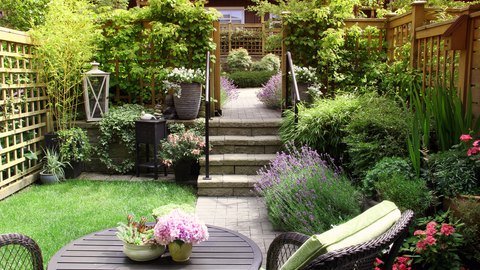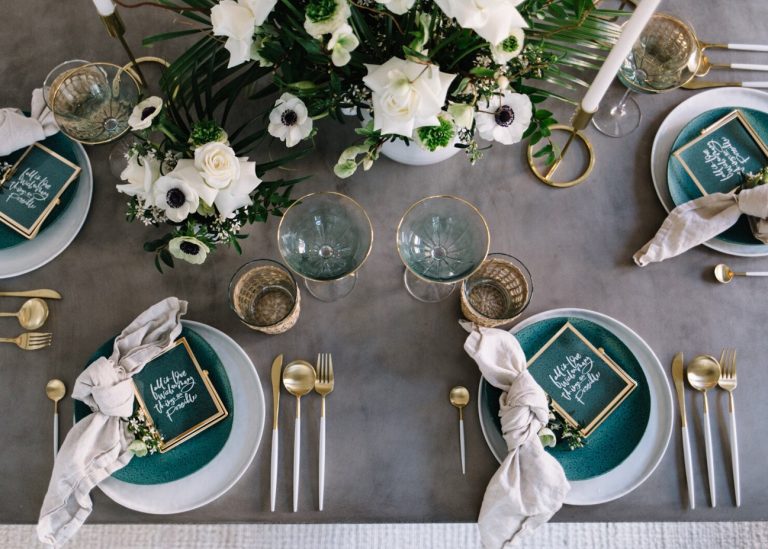Tips for Transforming Your Backyard on a Budget

There’s something undeniably special about having a beautiful backyard. It’s a place where you can unwind with a cup of coffee in the morning sun, host a weekend barbecue with friends, or simply enjoy the satisfaction of seeing plants you’ve nurtured thrive. Whether it’s a tiny courtyard or a spacious yard, a well-designed outdoor space adds value not only to your home but also to your lifestyle. It becomes an extension of your living space—one that encourages relaxation, creativity, and connection.
Yet, despite this universal appeal, many homeowners shy away from transforming their backyard because of one key misconception: that it’s too expensive. Between the glossy images in landscaping magazines and the seemingly endless costs of contractors and materials, it’s easy to believe that a backyard makeover is only for those with deep pockets. But the truth is, creating an inviting and functional outdoor space doesn’t have to drain your savings.
With some smart planning, resourcefulness, and a DIY spirit, you can bring your vision to life on a modest budget. In this guide, we’ll walk through how to make cost-effective choices, discover hidden savings opportunities, and tap into your creativity to design a backyard that reflects your personal style without overspending. You’ll learn practical strategies for low-cost landscaping, DIY decor, lighting, and even water features—along with real-world examples of transformations that prove it can be done. Whether you’re starting from scratch or refreshing an existing space, this guide is your roadmap to a budget-friendly backyard you’ll be proud of.
Smart Starts for Savvy Savers
Define Your Vision & Needs
Before buying plants or picking up a shovel, it’s crucial to get clear about how you want to use your backyard. Do you want a quiet place to read and relax? A play area for your kids? A vegetable garden to grow your own food? Or perhaps you’d like a social hub for entertaining friends and family. Defining your primary purpose helps focus your energy and budget where it matters most.
Start by gathering inspiration. Create a mood board using Pinterest, design blogs, or gardening magazines to see what types of layouts, colors, and features resonate with you. As you build your vision, make two lists: must-haves (e.g., seating area, shade, storage) and nice-to-haves (e.g., fire pit, water feature, outdoor bar). Prioritizing features allows you to stay focused on essentials without being overwhelmed by aesthetic trends or extras that might not fit your lifestyle—or your budget.
Assess Your Current Backyard
Next, take an honest inventory of what you’re working with. Walk around your backyard with a notebook or phone in hand. Identify strengths—like mature trees, existing flower beds, or a patio foundation—that you can incorporate into your plan. Likewise, note any challenges such as poor drainage, hard clay soil, or overly shaded areas that may require workarounds.
Pay attention to sun exposure throughout the day, as it directly affects plant placement and seating comfort. Look at the grading of the land—does water pool in certain areas? Are there natural slopes or raised spots that could be leveled or repurposed? Understanding your backyard’s microclimate (soil type, wind patterns, light availability) helps you make smarter, more sustainable choices during the planning process.
Set a Realistic Budget and Stick to It
Establishing a budget doesn’t just keep spending in check—it empowers you to be more creative. Start by estimating your total spend, then divide it into categories like plants, materials, tools, décor, and any professional help you might need. If you’re doing things gradually, prioritize projects in phases: foundation work like pathways or seating areas first, followed by planting and then decor.
Don’t forget to factor in a contingency of 5–10% for unexpected costs, like needing extra gravel or repairing something that pops up during installation. It’s always better to have a buffer than to be caught off-guard.
Research Local Resources and Deals
One of the most overlooked ways to save money is by tapping into community resources. Many local municipalities offer free mulch programs, tree trimmings, or compost through their recycling departments. Garden clubs and Facebook groups often host plant swaps, where you can exchange or receive perennials for free.
Second-hand stores and online marketplaces like Craigslist, Freecycle, or Facebook Marketplace are treasure troves for discounted outdoor furniture, pavers, bricks, pots, and even lumber. Often, you’ll find people giving away items they simply want hauled away after a renovation—meaning big savings for you with just a little digging.
High-Impact, Low-Cost Landscaping Elements
Strategic Planting: Maximum Green for Minimum Greenbacks
Plants are the soul of your backyard—but they don’t have to cost a fortune. Opt for perennials over annuals. Though they cost slightly more upfront, they return year after year, saving you money in the long run. Learn to propagate plants from cuttings or seeds, which is not only cost-effective but deeply satisfying. If you have neighbors or friends with established gardens, ask if you can divide or take cuttings from their plants—many common varieties like hostas, lavender, and daylilies thrive this way.
Focus on native plants adapted to your local climate. They typically require less water, fertilizer, and maintenance—and they’re often more affordable at local nurseries or native plant sales. For a high-impact look, group plants by height, texture, and color. Use repetition and layering (tall in the back, low in front) to create visual harmony and depth.
Vertical gardening is another great space-saving and cost-saving tactic. Use trellises, hanging baskets, or even wall-mounted planters to grow herbs, trailing vines, or flowers. Better yet, incorporate edible landscaping by growing herbs and vegetables that double as decor and dinner.
Mulching is one of the most beneficial and inexpensive steps you can take. It helps with water retention, reduces weeds, and improves soil structure. Budget-friendly options include wood chips from local tree trimming services, shredded leaves, or pine needles, which you can often gather yourself.
Creative Hardscaping & Pathways
Hardscaping adds structure and definition to your backyard, and you can do it affordably with a bit of ingenuity. Instead of expensive stone patios, try creating stepping stone paths using concrete slabs, thrifted tiles, or natural stones gathered from your property. Gravel is another cost-effective and easy-to-install solution for walkways and gathering areas—just lay down landscaping fabric and spread the stones evenly.
Repurposing materials is key here. Old bricks, broken pavers, or leftover construction materials (which are often given away on local classifieds) can be used to build patios, edging, or garden beds. Don’t underestimate items like bottles, cinder blocks, or timber offcuts—with a bit of vision, these can become artistic and functional elements in your backyard design.
Upcycling and Repurposing for Unique Decor
Backyard decor doesn’t have to come from a store. In fact, some of the most charming and personal touches come from upcycled materials. Use wooden pallets to build benches, vertical gardens, or coffee tables. Stack and paint old tires to create colorful planters or seating. Turn tin cans, teapots, or even boots into quirky flower pots.
Decorative items like driftwood, antique tools, or glass bottles can be turned into centerpieces or lighting features. Solar lights made from repurposed jars or wine bottles bring warmth and creativity to your space at night. The key is to see potential in what others might consider junk.
Enhancing Ambiance on a Shoestring
Lighting Solutions: Setting the Mood Without High Electric Bills
Lighting completely transforms the atmosphere of a backyard, especially in the evening. Luckily, you don’t need to invest in professional wiring. Solar-powered string lights, lanterns, and path lights are inexpensive, energy-efficient, and easy to install.
According to BSR Renovations, ambient lighting is one of the most cost-effective ways to elevate the feel of any outdoor space. They suggest combining multiple light sources—such as ground-level lanterns, string lights, and vertical-mounted fixtures—for layered lighting that adds both charm and function.
You can also make your own lighting using mason jars, wire hangers, and LED tea lights for a rustic, cozy vibe. Hang them from trees or fences to create a soft glow. For more impact, drape fairy lights along pergolas, railings, or garden beds. Look for discounted options during end-of-season sales or clearance events.
Water Features: Small Splashes, Big Impact
A soothing water feature doesn’t require a pond and pump system. A simple ceramic bowl filled with water, plants, and a few stones can serve as a reflective container pond. Add a solar-powered fountain pump for movement and sound.
DIY birdbaths are another budget-friendly option—just pair a wide bowl with an overturned pot or plant stand. Repurposed watering cans or stacked flower pots can be turned into cascading mini-fountains using small submersible pumps. The trick is to work with gravity and seal your containers properly.
Outdoor Fabrics and Soft Furnishings
Soft furnishings make your outdoor space feel like a true extension of your home. Thrift stores and clearance sales often have pillows, cushions, and throws at a fraction of the cost. If they aren’t weather-resistant, simply recover them using materials like shower curtains, vinyl tablecloths, or tarp fabric that can withstand rain and sun.
Adding an outdoor rugs defines your space and provides comfort underfoot. Look for inexpensive indoor/outdoor options on clearance—many hold up well even in less sheltered areas.
Creating Privacy Screens & Boundaries
Privacy is essential, especially in urban or suburban settings. If you can’t afford a new fence, get creative with trellises and climbing plants. Fast-growing vines like morning glory, clematis, or jasmine provide greenery and a natural screen within a season or two.
Repurposed materials work wonders here too. Old shutters, salvaged doors, or wooden pallets can be used to create vertical dividers. For a more natural look, roll-out bamboo screens are affordable, lightweight, and easy to install.
DIY Projects: Get Your Hands Dirty, Save Your Dollars
Essential Tools for Budget Backyard Transformations
You don’t need a shed full of tools to make a big impact. Basic tools like a shovel, rake, pruning shears, hammer, cordless drill, and a measuring tape will handle most projects. If you need specialty items like a post-hole digger or power saw, consider borrowing from a neighbor or renting from a hardware store.
Step-by-Step DIY Examples
- Simple Pallet Bench
- Stack two pallets for the base, attach a third for the backrest.
- Sand thoroughly and secure with screws or brackets.
- Paint or stain, then add weather-resistant cushions.
- Vertical Planter Wall
- Use a pallet or wooden frame.
- Attach landscaping fabric or plastic containers between slats.
- Fill with soil and insert herbs, flowers, or trailing vines.
- Gravel Path Installation
- Outline your path with a hose or rope.
- Excavate 2–3 inches deep, level the ground.
- Lay down landscape fabric and spread gravel evenly.
Safety Tips for DIY Projects
Always wear safety glasses, gloves, and appropriate shoes. Use tools as intended and follow manufacturer guidelines. Don’t take shortcuts—especially when working with power tools or heavy materials. If a project seems risky, don’t hesitate to ask for help or hire a pro.
When to Call in Professional Help
Know your limits. While DIY is empowering, tasks like electrical wiring, large tree removal, or major grading are best left to professionals. These jobs require permits, specialized knowledge, and can be dangerous if done incorrectly.
Maintenance & Long-Term Savings
Water Conservation Techniques
Install a rain barrel under your downspout to collect water for gardens. Use drip irrigation kits to deliver water directly to roots—saving water and promoting healthier plants. Focus on drought-tolerant landscaping that requires less irrigation overall.
Composting
Start a simple compost bin with kitchen scraps and yard waste. In a few months, you’ll have nutrient-rich soil for your garden, reducing the need for store-bought fertilizers.
Regular Maintenance
Weed weekly, prune seasonally, and inspect structures periodically to catch small issues before they become big problems. Preventative maintenance extends the life of your DIY projects and keeps your yard looking its best.
Phased Approach
Don’t feel pressure to complete everything at once. A phased strategy allows you to tackle high-priority projects first and add enhancements over time. This spreads out costs and gives you the chance to refine your vision as you go.
Case Studies / Before & After Examples
- Case Study 1: A young couple transformed their bare backyard into a charming retreat using second-hand furniture, gravel paths, and solar lights. Their total spend was under $600, thanks to clever DIY and community swaps.
- Case Study 2: A retiree converted her lawn into a native plant garden using cuttings and divisions from neighbors. Her focus on sustainability created a lush space with minimal maintenance and almost no cost.
- Case Study 3: A renter added removable privacy panels, a container garden, and a pallet bench to upgrade their rental yard on a shoestring, all while maintaining portability.
Bottom line
You don’t need thousands of dollars to create a backyard you love. With careful planning, resourceful thinking, and a DIY mindset, anyone can transform a bland yard into a welcoming outdoor haven. Focus on what matters to you, make use of what you already have, and embrace gradual progress.
Remember, it’s not about achieving perfection—it’s about creating a space that brings joy and comfort. So take that first step, sketch out your vision, and get started. Your dream backyard is closer and more affordable than you think. Start envisioning it today.






